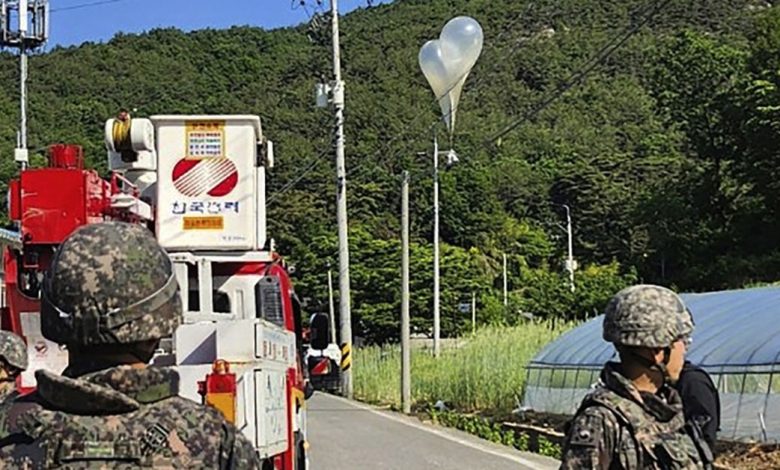North Korea sends hundreds of more trash-carrying balloons to South Korea

Between last night and this morning, about 600 balloons flown in from North Korea were found in various parts of South Korea.
The balloons carried cigarette butts, scraps of cloth, waste paper and vinyl, but no hazardous substances were included, South Korea’s Joint Chiefs of Staff said today.

The military advised people to beware of falling objects and not to touch items suspected to be from North Korea, but instead to report them to military or police authorities. There were no reports of injuries or damage.
In Seoul, the city government sent out text alerts saying that unidentified objects suspected to have come from North Korea had been spotted in the sky near the city and that the military was responding to them.
The North’s balloon launches added to a recent series of provocative moves that included a failed spy satellite launch and a barrage of short-range missile launches that the North said were aimed at demonstrating its ability to preemptively attack the South.

South Korea’s military sent rapid response teams with chemicals and explosives to recover debris from about 260 North Korean balloons that were found in various parts of the country between Tuesday night and Wednesday.
The military said the balloons carried various types of garbage and fertilizer, but not dangerous substances such as chemical, biological or radioactive materials.
Some of the balloons were found with timers that suggested they were designed to pop the trash bags in the air.
In a statement on Wednesday, Kim Yo Jong, the powerful sister of North Korean leader Kim Jong Un, confirmed that the North sent the balloons to respond to her country’s recent threat to “scatter heaps of waste and dirt” in South Korea in response to campaigns for handing out leaflets by South Korean activists.
She hinted that balloons could become the North’s standard response to leafleting, saying the North would respond by “scattering rubbish tens of times more than what is being scattered here”.

South Korea’s unification ministry said on Friday that North Korea must stop provocations – including missile launches and other actions – or face unspecified “intolerable” consequences.
The South Korean military has said it has no plans to bring down the balloons, citing concerns about causing damage or the possibility that they may contain dangerous substances. Firing balloons near the border would also risk retaliation from the North at a time of high tension.
“(We) decided it was best to let the balloons fall and retrieve them safely,” Lee Sung-jun, spokesman for South Korea’s Joint Chiefs of Staff, said during a briefing on Thursday.
North Korea is extremely sensitive to any outside attempt to undermine Kim Jong Un’s absolute control over the country’s 26 million people, most of whom have little access to foreign news.
In 2020, North Korea blew up an empty South Korean-built liaison office on its territory following a furious response to South Korean civilian leafleting campaigns.
In 2014, North Korea fired at propaganda balloons flying into its territory, and South Korea returned fire, although there were no casualties.
In 2022, North Korea even suggested that balloons flown in from South Korea had caused an outbreak of COVID-19 in the isolated nation, a highly dubious claim that appeared to be an attempt to blame the South for worsening inter-Korean relations.




